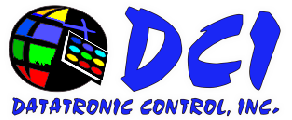The Misconceptions of Pixel Sharing
This article is designed to answer a few questions about Pixel Sharing and to explain the fundamental flaws in it’s display method.
What is pixel sharing?
Pixel sharing is the process in which adjacent pixels share diodes when displaying images, video, or text. There are two main ways in which this is attempted.
The first, is the idea is that if two pixels could share diodes, they would be able to duplicate twice the resolution by creating a virtual pixel. The problem is when sharing diodes, one of the pixels will always be absent a diode needed to produce a color. Even worse, if the virtual pixel uses diodes from both pixels, neither of orginal pixels will be able to produce the same color. In LED technology, a single full color needs at least 1 Red, 1 Green, and 1 Blue diode to produce a spectrum of colors. If even just one of those colors is taken from a pixel and used for another pixel, the original pixel can no longer produce that color. Ultimately using 2 pixels to produce the results of 1 pixel.
The second method uses a software program to alternate the same image back and forth between the pixel and the virtual pixel. The software tries to shift the picture fast enough that they hope the viewer will not notice. The problem with this method is that not only does it induce flickering which could cause epileptic seizures, but it also uses twice the amount of power in order to keep up the flickering. Often, these signs wil burn out in twice the amount of time of a normal LED display.
Why doesn’t pixel sharing work?
There are two primary reasons why this type of technology is flawed. The first problem deals with color distortion. If you try to display an image twice the size of the actual resolution of the sign, the sign has to make a choice. For every two pixels on the image, it has 1 pixel on the sign. So it will often choose the color that lies between the two original colors. Often, this is a color that you did not plan for or want displayed. When chosing between Bright Blue and Black, you might end up with a Dark Blue instead.
The second problem lies in when the display is forced to choose one pixel over another and it decides to use the virtual pixel to fill one of those pixels. The result is the first pixel never gets its actual color, the second pixel is displayed fine, but the third pixel in the line also does not get its full color. At that point even though the display thinks it is using all the pixels, the display is showing wrong colors, and an even greater reduced resolution than if someone had just created the image at the actual resolution. You basically go from thinking you are displaying an image at 200% the resoltuion down to only 75% of the original.
Bottom line.
Datatronic uses only the actual pixel resolution with all of our LED Displays. We do not believe in deceiving customers by tricking them with methods such as Pixel Sharing. Competitors will often sell their displays showing double the actual resolution of a sign, use it as a key point, and try to confuse the customer by stating it is possible with Pixel Sharing. They hope to confuse you with only telling you that it shares pixels, but not the full details on how it warps images, text, and videos.


Recent Comments